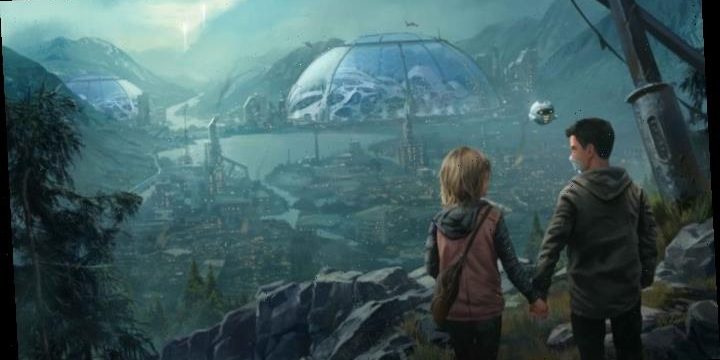“Dome 16,” a futuristic sci-fi climate drama from creator Thomas Seeber Torjussen and Norway’s Tordenfilm, has a new co-producer in Fleur Winters from Dutch production house Big Blue. It’s the second time the companies have joined forces, previously co-producing NRK’s popular teenage series “ZombieLars.”
In addition to creating the series, International Emmy nominee Seeber Torjussen (“Norwegian Cozy”) is also writing, and in Berlin with Tordenfilm producers Ingunn Sundelin and Eric Vogel to pitch the project at the Berlinale’s CoPro Series sidebar on Feb. 25.
Set 120 years in the future, in a world suffering from climate neglect, the series follows 14-year-old Anton, who lives in a domed city which keeps pollution and radiation out, and Emma, also 14, who lives with her clan of extended family members outside the dome. Occasionally, Emma and her mother are allowed into Dome 16 for part-time menial labor, which is how the young girl meets Anton and the two embark on an opposite side of the tracks relationship.
Ahead of their Berlin CoPro Series pitch, the film’s team talked with Variety about sustainable production, possibilities for distribution and writing to entertain multiple age groups.
Do you see this series as destined for free-to-air TV, pay TV or digital platforms? Or is that still flexible?
Sundelin: We expect our distribution opportunities to keep evolving while we are making the series and we must be flexible. But it’s fairly certain that our home audience will mainly see “Dome 16” on the digital platforms provided by our commissioning broadcaster NRK, backed up by linear broadcasts. Internationally, it’s wide open.
The world of the series is defined by environmental distress. How important is it then that the series be filmed in a sustainable fashion? What are some things you can do to ensure that happens?
Vogel: It’s important for any production, regardless of its theme or setting, to have a clear awareness of their environmental impact, and to make conscious decisions to minimize it. We are intent on finding locations and studio facilities locally as much as we can in order to minimize logistics during production, and to fully use digital tools to help realize the world of the series. A recycling strategy that includes our production design elements as well as our waste, and a fully electric fleet of production vehicles are other concrete steps we are taking.
What are you looking for in co-producers? What would you like them to bring to the production?
Vogel: Apart from financing opportunities and help with securing an international audience, we are looking for expertise in all areas to help ensure the quality of the series. That also includes input and experience in sustainable production.
This is a series that will have a distinct style and its own world, narratively and visual. What are some sources of inspiration going through your heads as you prepare this series?
Seeberg Torjussen: Making science fiction is in many ways a war on clichés, and the foremost one is that in the future – people have no sense of humor and everything is bleak and authoritarian. Our vision is not that. In fact, we think humanity 120 years from now is quite capable, lively, and a lot smarter than us in many areas. Although teenagers are still awkward, of course, and puberty is hell. The story itself has elements of “Romeo and Juliet,” and Astrid Lindgren’s “Ronja, the Robber’s Daughter,” where strong forces are working to keep apart a couple who were obviously meant to be together.
What is the intended audience for the show? I see the leads are both 14, does that mean it’s aimed at a teenage audience?
Sundelin: The tween and teenage appeal will definitely be there through the perspectives of the leads. However, like we saw with “ZombieLars,” we expect to reach a much broader and grown-up audience as well. In our minds, we are making a series that happens to have 14-year-olds in the lead roles, rather than a series exclusively for this group.
Source: Read Full Article

